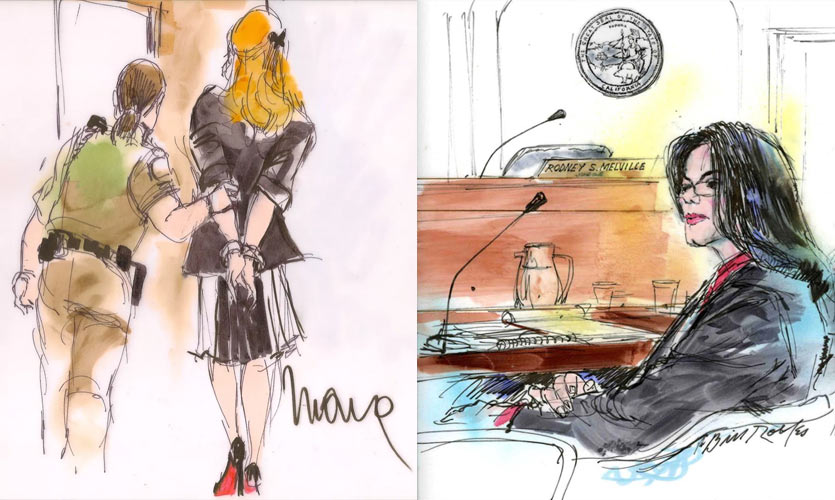Courtrooms and proceedings have always been a subject of public interest and the media especially for high-profile cases. A digital coverage of ongoing trials essentially forms public opinion. However, in this day and age, one would assume the same is being done with the help of camera setups or video recordings which can be viewed either live or post trial. But trials also require a filter of privacy, so that the involved parties can proceed without prejudice. The trial of O.J. Simpson in 1994 is a prime example of the disadvantages of televising a trial. That’s where the job of courtroom artists begins.
Simply procuring facts is not enough for major trials, so for decades people have relied on courtroom sketches reflecting the expressions and body language of the concerned people. In countries like the UK and US, courtroom artists hold a crucial place in proceedings, as journalists and citizens rely heavily on them to distill the developments through their pencils.
A string of prominent trials have been captured by a courtroom artist. Be it Micheal Jackson’s 2005 molestation trial or Lindsay Lohan’s 2007 drunk driving case, the sketches remain evocative to this day. Although their importance is undeniable, being a courtroom artist is anything but easy.
Apart from the stringent time frames of making the sketches, they’re the sole link between the two sides of the courtroom door, so perfecting every nuance of the sketch becomes doubly important. In the UK, the profession is twice as difficult, because artists are not allowed to draw inside the courtroom, and simply have to rely on the notes made during the trial to reproduce images out of memory. Many times, the faces of the people are not clearly visible, and a few glimpses is all you get to create the sketch.
The Taylor Swift trial of 2017 became viral amongst her fans because of the courtroom sketches. They underwent a lot of scrutiny and fans argued that the sketch looked nothing like her, criticizing the artist for the same. Courtroom artists have long stated that the focus always stays more on the entire scene unfolding before them and capturing key moments rather than getting facial features right. Photos capture a singular moment, and can easily be misunderstood without context. However, sketches present a complete picture reflecting a summary rather than a snippet. Also, they are much less intrusive, allowing the trial to proceed smoothly without interruption.
While India has never allowed either sketching or filming trials of the court, in 2020, the Chief Justice of India, N V Ramana, allowed a live streaming facility at the Gujarat High Court for the first time in history.
The profession of courtroom sketching may face a decline in the future if more courts turn towards camera recordings and pictures. Discussions surrounding the subject have been held since a long time, but the risks involved with camera have always brought everyone back to this unique form of art.
Read more: Relooking At ‘Court’ – A Narrative On Dalit Oppression










